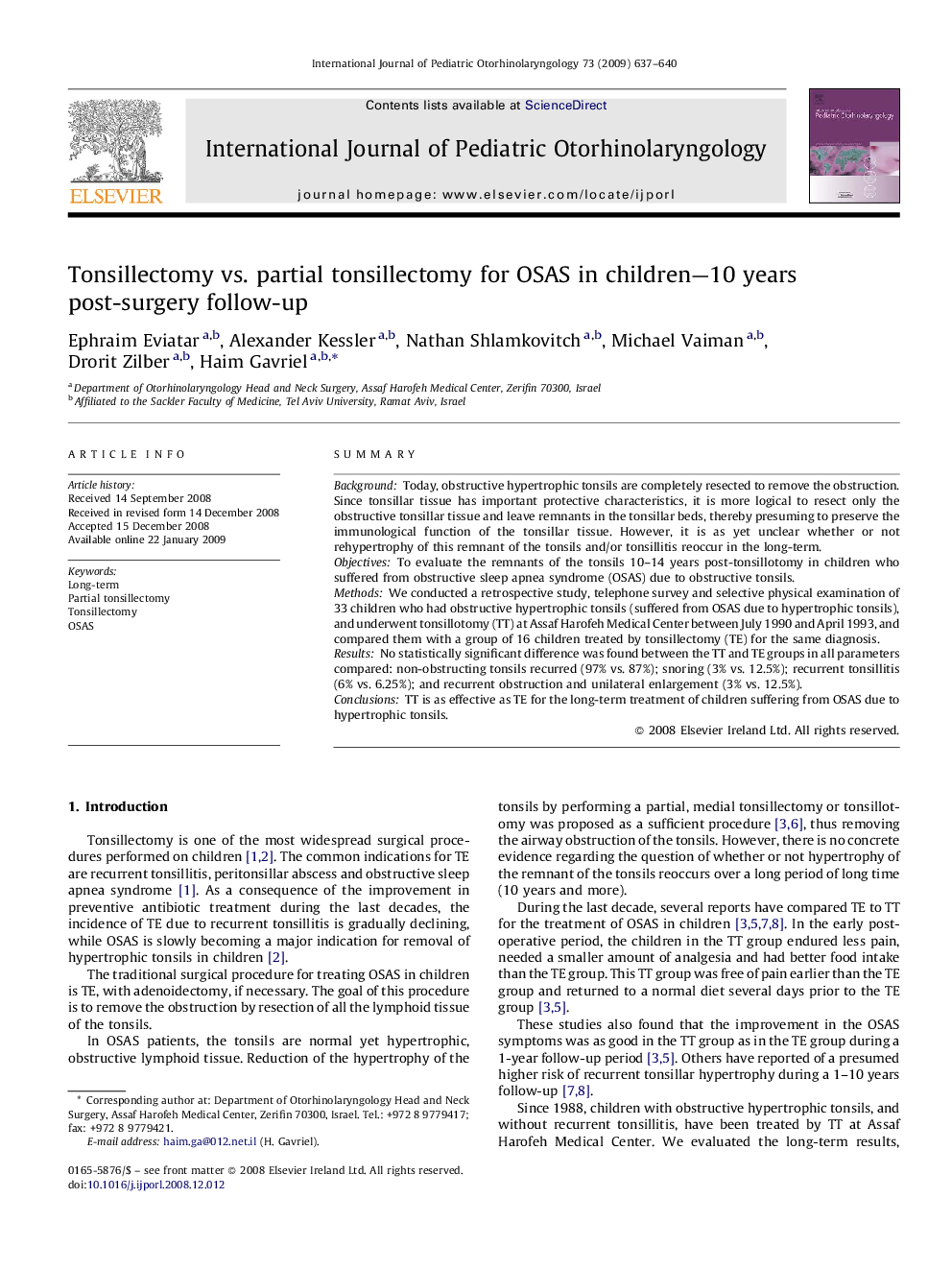| Article ID | Journal | Published Year | Pages | File Type |
|---|---|---|---|---|
| 4115309 | International Journal of Pediatric Otorhinolaryngology | 2009 | 4 Pages |
SummaryBackgroundToday, obstructive hypertrophic tonsils are completely resected to remove the obstruction. Since tonsillar tissue has important protective characteristics, it is more logical to resect only the obstructive tonsillar tissue and leave remnants in the tonsillar beds, thereby presuming to preserve the immunological function of the tonsillar tissue. However, it is as yet unclear whether or not rehypertrophy of this remnant of the tonsils and/or tonsillitis reoccur in the long-term.ObjectivesTo evaluate the remnants of the tonsils 10–14 years post-tonsillotomy in children who suffered from obstructive sleep apnea syndrome (OSAS) due to obstructive tonsils.MethodsWe conducted a retrospective study, telephone survey and selective physical examination of 33 children who had obstructive hypertrophic tonsils (suffered from OSAS due to hypertrophic tonsils), and underwent tonsillotomy (TT) at Assaf Harofeh Medical Center between July 1990 and April 1993, and compared them with a group of 16 children treated by tonsillectomy (TE) for the same diagnosis.ResultsNo statistically significant difference was found between the TT and TE groups in all parameters compared: non-obstructing tonsils recurred (97% vs. 87%); snoring (3% vs. 12.5%); recurrent tonsillitis (6% vs. 6.25%); and recurrent obstruction and unilateral enlargement (3% vs. 12.5%).ConclusionsTT is as effective as TE for the long-term treatment of children suffering from OSAS due to hypertrophic tonsils.
